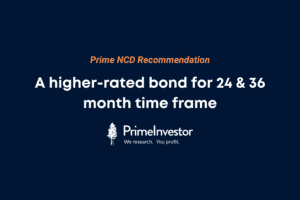
Best NPS Fund Manager
The funds that you contribute to your NPS account will be managed by the pension fund manager that you choose. These pension fund managers are registered with the PFRDA and work in accordance with the investment guidelines that are put together by the PFRDA. Currently, these are the pension fund managers that you can choose from. Do remember that this list is subject to change... Read more
- ICICI Prudential Pension Fund
- LIC Pension Fund Ltd
- Kotak Mahindra Pension Fund
- SBI Pension Fund Pvt. Ltd.
- UTI Retirement Solutions Pension Fund
- Max Life Pension Fund Management
- Tata Pension Management
- HDFC Pension Management Company Ltd
- Birla Sunlife Pension Management Ltd.
- Axis Pension Fund Management
Your choice of fund manager is not set in stone. You get to change once every year (unless your employer has made the choice already, in which case, your employer can change once every year).
Though you get the opportunity to change your fund manager annually, it is still imperative to make the best choice to give your funds a chance to springboard into a corpus that ensures you have a retirement as comfortable as you intended to. This is where our NPS Fund manager ranking tool comes in handy.
Best NPS Fund Manager Performance
Here is how we went about evaluating the performance of NPS fund managers to arrive at the rankings and therefore, the best NPS fund manager for you.
Each asset class has its own characteristics and each needs to be managed in a different way to deliver performance. PrimeInvestor’s scoring system will tell you which fund manager is better able to deliver steady returns in each asset class with smaller drawdowns and lower risks. The score and ranking are both calculated every day.
First, we have a screening where we evaluate for some minimum criteria to be met like track record. Then we measure performance for each fund manager for each asset class separately.
Here, we have different criteria for each of the asset classes. For instance, in equity we look at consistency in delivering returns above the Nifty 100 TRI in addition to return characteristics such as volatility and downside containment. In corporate debt and gilt, we look at consistency in performance in addition to risk measures.
The end result is that you get to choose the fund manager that is best at delivering in each asset class.
About the NPS Scheme
What is NPS ?
The NPS Scheme (National Pension System Scheme) is a market-linked, Central Government scheme, designed to help you systematically provide for your retirement. It is a voluntary scheme and is often associated with the tax benefits that it brings. The scheme gives you a lot of flexibility and one of the key aspects that you can control is the choice of fund manager that will manage your money.
The scheme was launched by the Central Government in December 2003, to help individuals plan for their retirement needs by systematically putting away for it each month.
It is a voluntary scheme that is often associated with the tax benefits that it brings. The scheme is structured in a way that at retirement, you are encouraged to convert a chunk of the proceeds into an annuity that will provide you with an income in your retirement.
The scheme is regulated by the Pension Fund Regulatory and Development Authority (PFRDA).
NPS Scheme details
Here is a look at the key NPS scheme details.
Who can enrol?
The NPS scheme is available to citizens of India and comes in three variants.
- Mandatorily for all Central Government employees who joined on or after January 1, 2004 except those in the Armed Forces. (Employees of the State Government/ UT, State Autonomous Bodies adopting NPS too are covered under NPS).
- Voluntarily by corporates for their employees where the employer will make a contribution to the NPS account of the employee. The employee too can contribute. This is commonly known as ‘corporate NPS’.
- Voluntarily to all citizens of India including NRIs (but not PIO or HUF) between the ages 18 and 70 years.
Once you enrol in the NPS Scheme, you will be given a Permanent Retirement Account Number or PRAN and a PRAN card.
Portability
You can only have one NPS account but this account is portable and can be operated from anywhere in the country irrespective of employer. An NPS subscriber can move between employers and sectors and still use the same NPS account.
You can have different pension fund managers and investment options for tier 1 and tier 2.
As an investor, you also get to decide how actively involved you are in the management of your funds. You can opt for the ‘active choice’ option where you choose the asset class and proportions or the more hands-off ‘auto choice’ where based on your age, the asset mix will be pre-set.
Asset Classes to invest in under the NPS scheme
The following are the four asset classes available under the NPS Scheme.
- Equity and related instruments
- Corporate debt and related instruments
- Government Bonds and related instruments
- Alternative Investment Funds including instruments like CMBS, MBS, REITS, AIFs, Invlts etc
Tiers
The NPS Scheme offers you two ‘tiers’.
Tier 1
: This is the permanent retirement account into which the regular contributions made by the subscriber and/or their employer are credited and invested. Withdrawals from Tier 1 accounts can only be made in accordance with the ‘Exit & withdrawal rules and regulations’. The minimum contribution to open an account is Rs. 500 and the minimum contribution per annum is Rs. 1,000.Tier 2
: Tier 2 is an add-on. You can only open a tier 2 account if you have an active tier 1 account. Here you can invest and withdraw without restrictions unlike in a Tier 1 account. While the minimum contribution to open an account is Rs. 250, there is no minimum contribution per annum. You can also move your funds from tier 2 to tier 1 anytime though the reverse is not possible. Do note that you will not get any tax benefits with respect to Tier 2.You can have different pension fund managers and investment options for tier 1 and tier 2.
Tax Benefits on contribution to NPS Scheme
Tax benefits are only available with respect to Tier 1 and here is a summary.
As an employee contributing to NPS, you will be eligible for the following benefits, provided you opt for the old regime:
- Tax deduction up to 10% of salary (Basic + DA) under section 80 CCD(1) within the overall ceiling of Rs. 1.50 lakh.
- Tax deduction up to ₹50,000 under section 80 CCD(1B) over and above the overall ceiling of Rs. 1.50 lakh.
As an employee, you are eligible for the following benefits on what your employer contributed:
- Tax deduction up to 10% of salary (Basic + DA) (14% if such contribution is made by Central Government) contributed by employer under Section 80 CCD(2) over the limit of Rs. 1.50 lakh provided under section 80 CCE.
- This benefit is available even if you opt for the new tax regime but is capped at Rs. 7.5 lakhs including employers contribution toward EPF and superannuation.
If you are self-employed and have an NPS account, you are eligible for (provided you opt for the old tax regime):
- Tax deduction up to 20 % of gross income under section 80 CCD (1) subject to the overall cap of Rs. 1.50 lakh under Sec 80 CCE.
- Tax deduction up to ₹50,000 under section 80 CCD(1B) over and above the overall ceiling of Rs. 1.50 lakh under Sec 80 CCE.
NPS Interest rate
There is no predetermined ‘NPS Interest rate’. What you eventually get depends on the performance of the underlying assets which is why the NPS scheme is called ‘market-linked’. Take a look at how returns under the NPS scheme have fared here.
NPS Pension Calculator
The NPS Pension calculator available on the NPS Trust website will help you get an idea of what you can expect to get on maturity. For this, the calculator relies on the following inputs from you.
- Age
- Contribution per month
- Contribution until age in years
- Expected rate of return
- The percentage you intend to use to purchase an annuity
- Expected annuity rate
NPS Withdrawal rules - exit from NPS scheme
Since NPS is an avenue to build wealth for a long term goal (retirement) which will be most effectively achieved with compounding, withdrawals and exits are not freely permitted in Tier 1, but are subject to the regulations of the PFRDA. Here are the key NPS exit rules that you need to be aware of.
- Your NPS account matures when you turn 60. Which means you can withdraw only when you turn 60. At this point, you can withdraw 60% of the accumulated corpus and will have to purchase an annuity plan with the remaining 40%. You can however, use a higher proportion to buy an annuity.
- Your withdrawal (60% on attaining age 60) and annuity purchase will be eligible for tax exemption but the income received from the annuity will be taxed.
- If your accumulated wealth is less than Rs. 5 lakhs, you can withdraw the whole amount but will not receive any pension going forward.
- Alternatively, you can also choose to continue to remain subscribed to the NPS scheme till you turn 75.
- In case of death, the accumulated wealth will be paid to the nominee / legal heir who can opt to buy an annuity.
- An exit from the NPS scheme before attaining the age of 60 is only allowed subject to the conditions set out by the PFRDA.
- For a more detailed look at NPS withdrawal rules surrounding an exit from the NPS scheme, do take a look at the detailed FAQs and guidelines on exit and withdrawal from the NPS Scheme.
NPS Withdrawal rules - Partial withdrawal
While the above deals with an exit from the NPS scheme, should you have a need for funds, you will be able to make partial withdrawals (without exiting) from your NPS account (Tier 1) before you turn 60. This too is subject to certain conditions.
- You should have been an NPS scheme subscriber for at least 3 years.
- You can do a partial withdrawal only 3 times in your entire tenure.
- You can withdraw only up to 25% of your contribution (not your employer’s contribution). This will be eligible for tax exemption subject to the conditions set out by the PFRDA.
- The partial withdrawal should be for certain specified purposes only including higher education or marriage of child, house construction, specified illnesses etc.
- Take a look at the detailed conditions for a partial withdrawal from your NPS account here.
Our Other Tools
At PrimeInvestor, we have a host of tools to help make your investing smoother. Here are some of our standout products.
- Portfolio Review Pro - a game changing tool that will make reviewing your mutual fund portfolio a breeze, all powered by our deep research so not only have a leaner and better performing portfolio but also a lot more free time!
- Mutual Funds Overlap - Compare up to three funds to see how similar their portfolios are so that you don't end up owning the same stocks via different funds.
- Prime Screener - Create your own or use one our premium screeners to narrow down on a shortlist of stocks.
FAQ
Best NPS fund manager for Tier 1
Here is how we went about evaluating the performance of NPS fund managers to arrive at the rankings and therefore, the best NPS fund manager for you.
Each asset class has its own characteristics and each needs to be managed in a different way to deliver performance. PrimeInvestor’s scoring system will tell you which fund manager is better able to deliver steady returns in each asset class with smaller drawdowns and lower risks. The score and ranking are both calculated every day.
First, we have a screening where we evaluate for some minimum criteria to be met like track record. Then we measure performance for each fund manager for each asset class separately.
Here, we have different criteria for each of the asset classes. For instance, in equity we look at consistency in delivering returns above the Nifty 100 TRI in addition to return characteristics such as volatility and downside containment. In corporate debt and gilt, we look at consistency in performance in addition to risk measures.
The end result is that you get to choose the fund manager that is best at delivering in each asset class.
Which NPS fund manager is best?
Here is how we went about evaluating the performance of NPS fund managers to arrive at the rankings and therefore, the best NPS fund manager for you.
Each asset class has its own characteristics and each needs to be managed in a different way to deliver performance. PrimeInvestor’s scoring system will tell you which fund manager is better able to deliver steady returns in each asset class with smaller drawdowns and lower risks. The score and ranking are both calculated every day.
First, we have a screening where we evaluate for some minimum criteria to be met like track record. Then we measure performance for each fund manager for each asset class separately.
Here, we have different criteria for each of the asset classes. For instance, in equity we look at consistency in delivering returns above the Nifty 100 TRI in addition to return characteristics such as volatility and downside containment. In corporate debt and gilt, we look at consistency in performance in addition to risk measures.
The end result is that you get to choose the fund manager that is best at delivering in each asset class.
More articles from PrimeInvestor
Our happy customers






